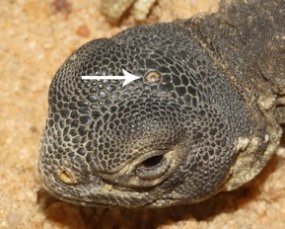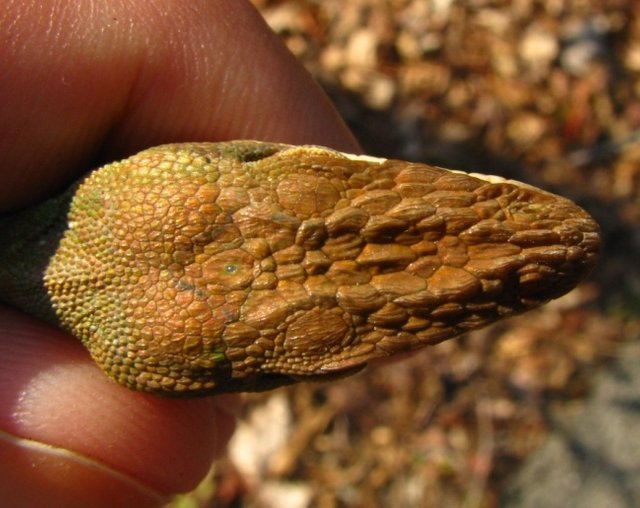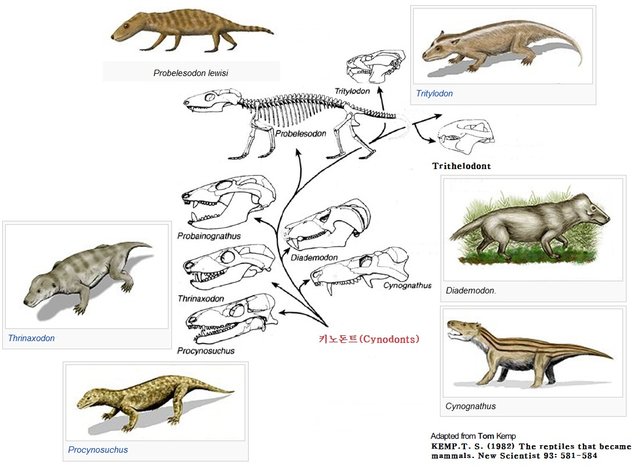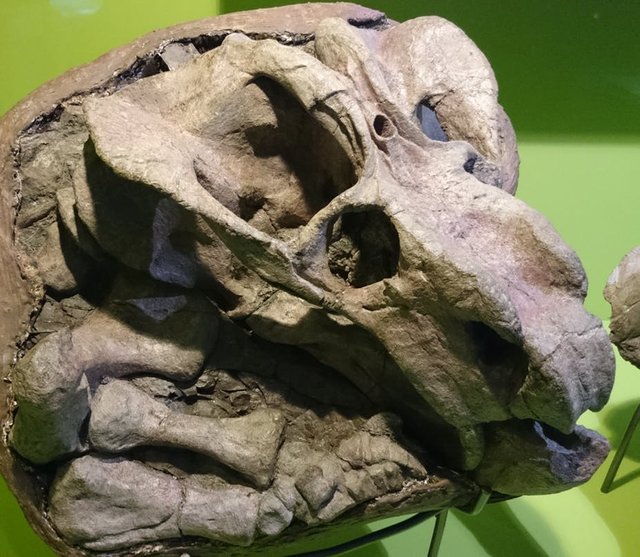Third Eye of Ancient Reptiles Reveals Clues About Evolution of "Warmbloodedness"
Located deep within your brain is a small cluster of neurons that we call the pineal gland. Producing melatonin, the pineal gland regulates sleep patterns in both circadian and seasonal cycles, but it is also an evolutionary relic, all that remains of a long lost organ: the pineal eye (also called the third eye). In our ancient reptilian ancestors, the pineal eye was actually a functional third eye, and just like our paired eyes, it was made up of a cornea, a lens and a retina. Unlike our eyes, the pineal eye was covered by a thick scale, and could only differentiate between light and dark. Though pineal eyes disappeared long ago in the mammalian lineage, they still exist (and function!) today in many species of lizards, tuataras and some amphibians and fish. (Check out a post I wrote last year about reptiles' third eye here.)

So what is the point in having a third eye that only sees light vs dark if primary eyes can do so? Researching modern species with a pineal eye, biologists have discovered that the third eye functions as a sort of calendar, and can see when days are growing longer or getting shorter, allowing the brain to recognize seasons. As a result, this influences life cycles such as sleeping and reproduction. In surgical studies where the pineal eye has been removed, lizards have difficulty regulating their body temperature through thermoregulation; in the wild, this would almost certainly negatively affect their ability to survive. This would suggest that ancient reptiles also relied on their pineal eye to maintain an ideal body temperature, and biologists began wondering if the pineal eye could reveal when our pre-mammalian ancestors first achieved their endothermy, or "warm-bloodedness". When animals evolved the ability regulate their temperature internally, they would not have required the pineal eye for thermoregulation (today, the only animals with a pineal eye are ectotherms or "cold-blooded").

Fortunately, even in long extinct animals, the evolution of the pineal eye is easy to study. In the skulls of ancient reptilian animals, it is a bony tube that pierces the skull roof, allowing room for the pineal eye and accompanying nerves. Many of our ancestors, the pre-mammalian therapsids, exhibited this pineal foramen on top of their skulls revealing that they had the pineal eye. Paleontologists reasonably assumed that the presence of the pineal eye fulfilled the same role as it does in today's reptiles, suggesting that these animals were still "cold-blooded".
A team of paleontologists and neurologists set to work studying over 600 skulls, all found in the Karoo's rich fossil-bearing deposits, dating between 300 million and 200 million years ago. This time period was critical; during that time, South Africa was located incredibly close to the South Pole as a result of continental drift, and the climate was far colder and drier. The theory was that any animal found to have survived under such harsh conditions without a pineal foramen would likely have been "warmblooded" and the pineal eye was no longer required for survival.
The pineal foramen was found in the vast majority of therapsids living more than 260 million years ago, however after that time, the foramen became increasingly absent. Paleontologists believe this is when the pineal eye was no longer required for survival and became dispensable. One of the lineages in which the loss of the pineal eye increased was the cynodonts, the lineage that eventually gave rise to modern mammals. The pineal foramen in cynodonts completely disappeared 246 million years ago, and biologists now regard that as the time when the shift from "cold-bloodedness" to "warm-bloodedness" was achieved (10 million years before the arrival of the first dinosaur!).

The proposed evolutionary scenario still requires further study, but biologists are thrilled that they may have unlocked some of the secrets behind the evolution of one of our most critical survival adaptations...an adaptation that allowed mammals to survive 200 million years of the rise and extinction of dinosaurs, and two mass extinctions to thrive to the present day.
Article Link: https://theconversation.com


There's something I don't quite understand. Is this "third eye" a vestigial organ?
Nice piece buddy
Not exactly. In humans, we do not have any trace of the pineal eye...it disappeared long ago because our ability to internally thermoregulate made it unnecessary. We do still have our pineal gland, but as stated in the post, it serves a vital function and isn't vestigial. Inmany species of reptiles, the third eye still remains and is completely functional.
Please upvote me
Sooo, we actually HAD the third eye, just long time ago down the line?
Ok, this was something new I never heard before.
Wellllll, Sort of. We of course weren't even mammals yet when the pineal eye existed, but yes, it did exist within our evolutionary lineage.
The pineal eye, or parietal eye, in the tuatara, some lizards, and many frogs, serves as a light sensor that then influences the brain. Glands in the brain of these animals (like the pineal gland) are "informed" by the sensor regarding ambient light, time of day, and day length and can then act to regulate circadian rhythms, adjust thermoregulation, and even regulate the onset of sexual and mating activity
Wow Very Amazing Post !
i like it keep it up @herpetologyguy
Added my knowledge of reptiles. thank you
nice information about parietial eye. I wanna learn more about it can i ?
Wow, Nice Infomation, added my knoledge about reptilia kingdom
Hewan hewan satwa yang langka..bisa di jadikan hewan ternak hias..luar biasa..tepukcom tangan